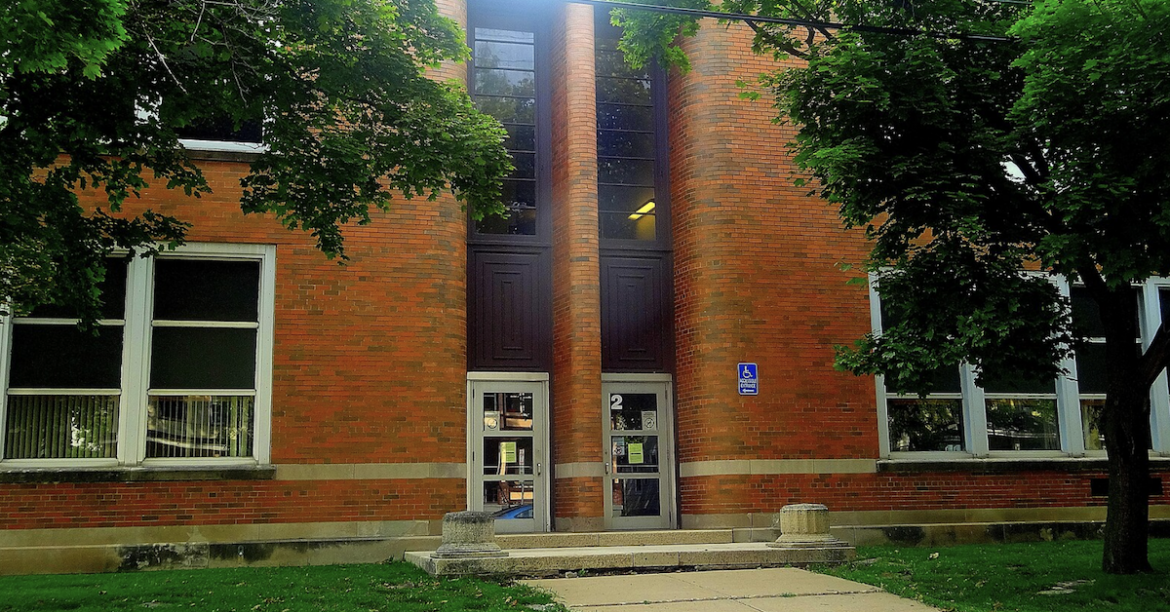Madison Metropolitan School District (MMSD) and its students find themselves caught in the crossfire of an educational revolution meant to address the systemic disadvantages that have plagued the education system for far too long. The quest for equitable education has become a beacon of hope as well as a battleground for challenges.
Patti Shaefer is the director of STEM for MMSD, an educator for anti-racism programming and a leader in dismantling white supremacist culture in schools. She shared some background on the new homework and grading policies adopted by MMSD in 2019, helping to reveal some of the negative and positive experiences students and teachers have had since the policy changes were made in an effort to address the city’s racial and economic educational achievement gap and reduce the risk of students failing out of school. Three MMSD employees, including two teachers and an administrator, also weighed in on the policy, now four years after its launch.
The homework policy encourages teachers to assign little out-of-class work, offer voluntary due dates, and introduce a new grading floor of 50%, which means that if a student needs to pass a class with a D, they need to submit only 10% of the assigned work rather than 60%, which would be necessary to earn a D if the grading floor were zero. The policy was introduced to prevent grades from dragging down students’ GPAs and furthering the achievement gap.
Administrators across the district, led by Cindy Green, MMSD’s associate superintendent for teaching and learning, have worked with the schools to identify challenges while continuing to review research on grading policies. A book by Joe Feldman, “Grading for Equity,” has been a guiding resource for these new changes as they think of ways to improve their systems.
“It was really in collaboration of doing some reading and some reflecting on what was and wasn’t working for our students and what were some of the inequalities we could address,” Shaefer said.
As the district leaders continue to reevaluate their policies, they have taken effective steps to hear from both students and staff, looking at the positive outcomes and challenges they continue to face. They have used research to guide them throughout this process, finding that grading homework might not be a good way to motivate some students.
“There are other reasons that we should have for students to do homework that isn’t this extrinsic motivator of a grade. That homework is practice, and practice should be done because practice is needed to improve,” Shaefer said.
Perspectives on the matter vary, with some saying we are stepping closer to changing the system that did not serve our students. MMSD board of education member Ali Muldrow described how old policies were at the core of the problematic structure, which did not consider the children who do not have certain luxuries, such as internet connection, parents being available to help with homework and students who have part-time jobs. These advantages allow only the ones privileged with such structures to get ahead, to learn at home, to come to class prepared, to participate and get good grades, Muldrow said.
Alicia Grant, Madison West High School’s multicultural student services coordinator, described the systematic disadvantages that have targeted the marginalized community and their scholars in MMSD.“We have always said the structure of the education system was not designed for our Black and brown kids in the first place. If we want to change it, we’re going to have to create a different structure,” said Grant.
Avital advocate and counsel for the marginalized scholars at West High School, Grant knows many problems that regularly become barriers to their success. “There’s Wi-Fi issues. There are family issues. There is homelessness,” she said.
While the district has received positive feedback on the policies’ impact on equity, it is working through the challenges that come into play with these new policies. Some teachers are experiencing mounting frustration as they struggle to make the most of valuable class time, cover all their material, and foster their students’ appreciation for learning.
On top of the 50% floor, the homework policy has made it easy to get by on so-called summative tests. Jessica Hotz, an asocial studies teacher at Madison East High School, has said it dramatically affects attendance and further disturbs the learning environment she is trying to foster.
“It means that learning every day doesn’t matter; it just matters whenever you have a summative project or a test or something. So, kids don’t do any of the classwork, even if they’re given tons of time to do it in class. Our attendance is really low, and there’s no repercussions for being gone right now,” Hotz said.
Homework is a tool for concept mastery, accountability, responsibility, and time management. For many teachers, homework has always been a tool they use to drive class discussions. And now many teachers feel frustrated by the new homework policy because it has made it close to impossible for them to have valuable class discussions, according to Hotz.“We lose a lot of class time, truthfully Even if it’s in-class work, we can’t count on them finishing that too. In my opinion, we are cutting material,” she said.
She also described this unclear grace period of due dates as detrimental to the student’s success.
“ You know, it’s all about the end result, which is honestly some sort of savior complex… It’s just gross. Its depressing,” said Hotz. “We have a mental health crisis. To teach a kid that every day doesn’t matter is hugely a problem to me.”
Shaefer described these challenges as something the district will continue to work through as the future of these policies is discussed and how they aim to weigh all opinions from staff and students. On the topic of homework, they have considered how these flexible due dates have made it difficult for students with too much work to make up at the end of the semester.
“What we recognized and heard from students was that this was not helping them develop strong learning habits of making continual progress, and we can’t really take 18 weeks of learning and push it into one final,” Shaefer said.
As the teaching and learning teams throughout the district continue to work together, they have been able to take small steps to remedy these problems.
“We’ve restructured a lot clearer time frames, deadlines for when students have that opportunity to make up for certain parts of the course, and then close up the semester with a final opportunity,” Shaefer said.
The district continues to evaluate challenges and opportunities for improvement around education, experimenting with new grading skills and working to better understand both the students and the staff through this restructuring and policy changing.






